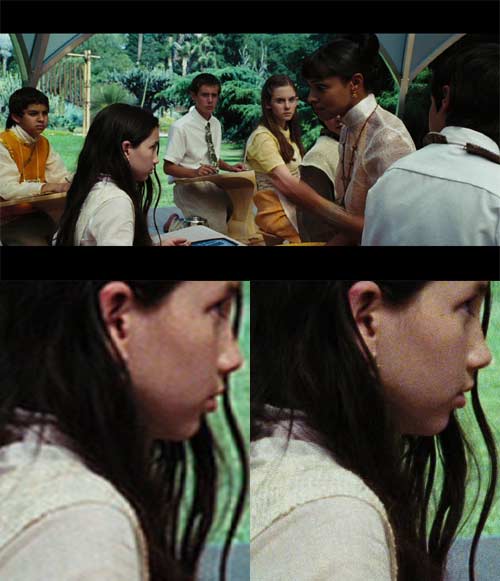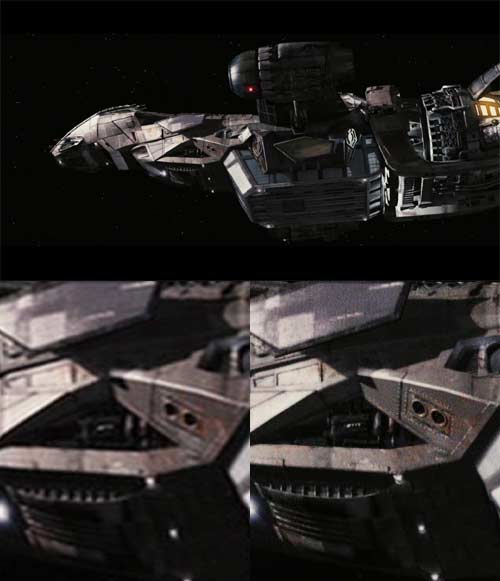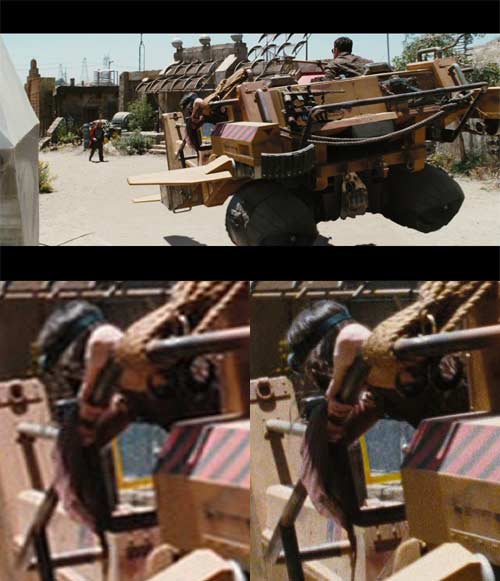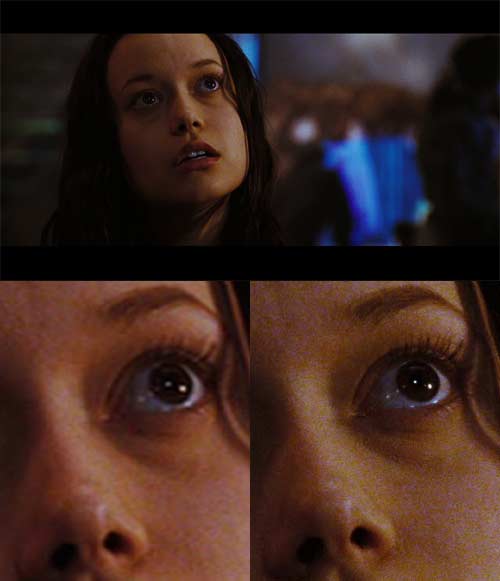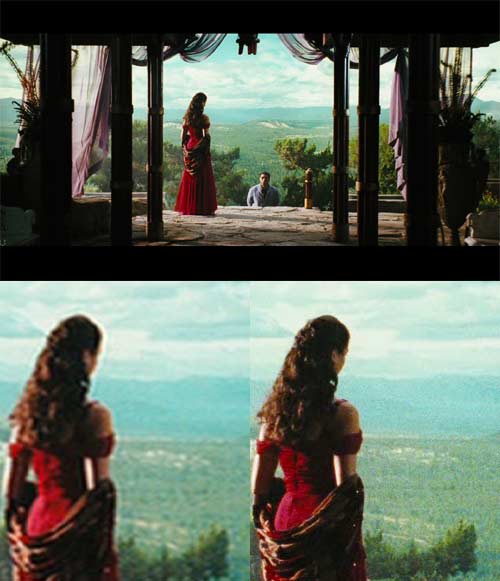 Picture:
Picture:  Sound:
Sound:  Extras:
Extras: 
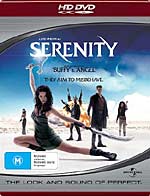 Serenity
Serenity
Movie:  Picture:
Picture:  Sound:
Sound:  Extras:
Extras: 
Unfortunately, it was a show with a season-wide story arc that seemed destined to be forever unresolved. But somehow Whedon managed to convince Universal that he ought to make a movie to finish things off.
Serenity is the name of the spaceship from the TV series, and the movie does indeed round it out satisfactorily. But don't worry if you are amongst an almost complete entirety of the population who never saw the series, the movie stands perfectly well alone. It is exciting, the special effects are great, and the dialogue and actions are so unexpected, but logically compelling, that it is elevated to the first class.
Also of the first class is the picture quality, which comes through with exceptional sharpness, a total lack of artefacts, and a superbly rendered variable colour palette (different palettes for different types of scene).
But the real gem in this movie is the sound. Surround sound is actually used, often and excitingly. You are totally enveloped in the action, with battle noises, and spaceship noises and all other kinds of noises everywhere. And your subwoofer is used. The bigger, the deeper and more powerfully it goes, the better. This is a movie of limitless bass, which will be limited only by your sub.
 (Australian rating)
(Australian rating)
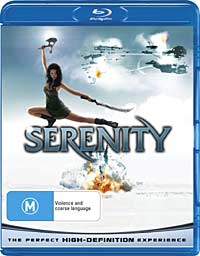 Serenity
Serenity
Movie:  Picture:
Picture:  Sound:
Sound:  Extras:
Extras: 
All that makes me look bit of a dill since the Blu-ray version has been released with better video, better sound and better extras. Still, the movie itself is the same! This movie is how action-based science fiction ought to be.
The picture really is better than that of the HD DVD, although you may not notice. I grabbed some still frames from both versions and managed to find one I could closely compare between the two. The Blu-ray one was just barely more detailed and clearer than the HD DVD one. The VC1 video bitrate for the Blu-ray averages 20.53Mbps. I don't have a tool to directly measure it for the HD DVD, but some calculating from file sizes suggest the HD DVD version is 16.3Mbps or less.
Still, the difference is so slight that I wouldn't for that reason alone switch over.
On the HD DVD all the audio was delivered in lossy Dolby Digital Plus format, albeit with the English language version scoring 1,536kbps, keeping losses to a minimum. Blu-ray gets lossless DTS-HD Master Audio track with 24 bits of resolution and an average 4,309kbps (even more than The Day the Earth Stood Still). The sound is glorious. I would love to say that it is clearly better, but I can't. The losses from DD+ lossiness and the omission of the eight least significant bits of resolution are by no means obvious. Still, with the Blu-ray you know that you are getting everything that there is to be got.
As for extras, well the only tick box in my disc database which remained unticked was for 'Trailers'. You get all the featurettes and deleted scenes from the HD DVD, plus more. Including BonusView PIP ... two of them! Plus bookmarks, including marked segments called 'My Scenes', which you can share with others via BD-Live.
 (Australian rating); Region Free
(Australian rating); Region Free
The following video bitrate graph was generated by BDInfo 0.5.3:
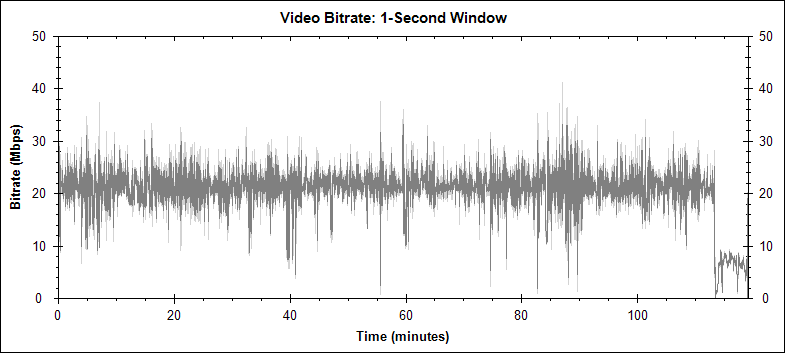
The next two video bitrate graphs are for the two PIP eements in the movie:

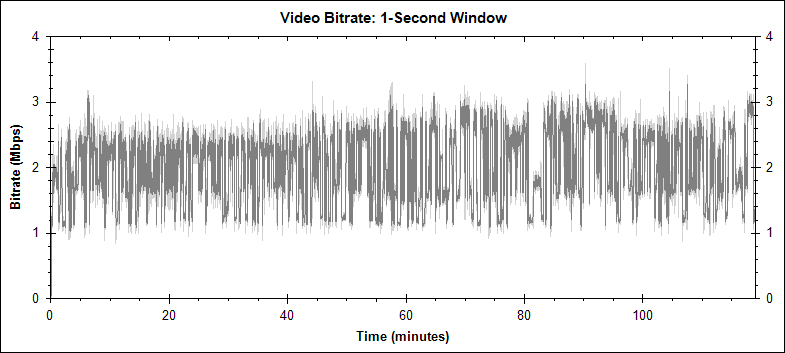
How much?
Besides the obvious differences, mentioned above, when I extracted frames and compared them, they were quite different. The 'I' frames were even in different places for the most part.
The extraction of frames from the HD DVD version fell over after only the first one hundred 'I' frames. I don't know why. So I had a limited number of chances to find matching frames between the HD DVD and Blu-ray versions. But I did manage to find one. Here it is, shrunken to fit:
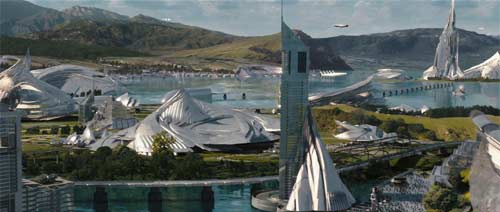
Now here is a 250 by 300 pixel detail from that frame, unscaled, and compressed only in the lossless PNG format, with the HD DVD capture on the left and the Blu-ray capture on the right:

The differences are there, but by no means obvious. In fact, I chose this section because it was with the forested hills that the differences were most marked. If you examine them closely, you will see that the dark parts are a little darker on the Blu-ray, and the detail a bit clearer. It's as though a fine veil or haze overlays the HD DVD version. But an almost transparent one, just enough to knock the edge of clarity off.
The full PNG frames from which I extracted these details were the following sizes: 2,201,983 bytes for the HD DVD extract, and 2,421,047 bytes for the Blu-ray. In other words, the HD DVD frame was 91% of the size of the Blu-ray frame. That suggests that it was inherently more compressible than the Blu-ray version, given that the application I used employed the same compression parameters (for example, it produces identical HD DVD and Blu-ray PNG shots for Total Recall, Corpse Bride and First Blood). That in turn suggests that there truly is more detail in the Blu-ray version.
In the following examples, at the top of each is the full frame (suitably shrunk down) used in the comparison, with a 250 pixel wide detail from the frame underneath. The left side is from the PAL DVD. The image was captured digitally from the disc, scaled up from its native 720 by 576 resolution to 1,024 by 576 (to present in the 16:9 aspect ratio), and then, in order to be comparable to the Blu-ray version, from that to 1,920 by 1,080. The detail is from that last scaled version, and has not been rescaled again. The right side is from the Australian Blu-ray. This has not been scaled at all.
Surprisingly, for such a recent movie, the framing was quite different between the DVD and the Blu-ray, although identical between the Blu-ray and the HD DVD. That would suggest that a different telecine process was conducted for the high definition transfers. The aspect ratio is 2.35:1 for both of them, as close as can be managed within rounding error. Both the Blu-ray and the DVD run the picture up to the left and right edges of the frame. The bottom of the frame is at the same place against the picture, but this is shifted down slightly in the DVD version so that the bottom black bar is a little narrower than that on the Blu-ray. The top bar is equally shifted down, but the vertical scale of the image seems to be stretched a little, so that the top 1.7% of the image is effectively cropped.
Different applications were used to capture the two frames, so I am not normally comfortable comparing the colour between the two, merely the detail and sharpness. For those visitors from NTSC lands, generally the PAL DVD is just a touch sharper than the NTSC DVD.
I shall make no further comment, for it is obvious what you must do. If you love this movie, you must have the Blu-ray.
